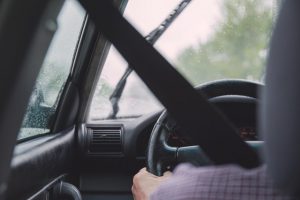How Seat Belts Keep You Safe and Why You Need to Wear One
According to the National Highway Traffic Safety Administration (NHTSA), 47% of the 37,133 crash-related deaths in 2017 were not wearing seatbelts. Also, in the same year, seatbelts have saved approximately 15,000 lives. These statistics prove just how essential seatbelts are and why you should always wear one while on the road.
Seatbelts are installed in cars for a big reason: safety. Although it doesn’t make you 100% safe from injuries during a crash, it reduces the impact dramatically. Here are some ways seatbelt work in securing you during an auto accident:
*Keeping the vitals safe
The most vulnerable parts of your body are your brain and spinal cord. The seatbelt aims to protect these two parts by keeping you restrained to the seat. This way, your head won’t bang to the steering wheel or dashboard in the event of an accident.
Also, seatbelts reduce the effects of whiplash, which can injure your neck and spinal cord. Since the impact and speed are minimized, you’re less likely to be injured if you’re wearing a seatbelt.
*Slows down body speed
During a crash or collision, your body will follow the same speed as the other components of your car experiences. Without a seat belt, your body will experience an impactful jolt that will lead to fatal injuries.
What seatbelts do during these situations is to buffer the speed of your body so it won’t slow down too fast and slam you back to the seat. This is critical in preventing deadly injuries.
*Keeping your body inside the car
The first-ever seatbelt was made to keep pilots inside their gliders. When applied in vehicles, it will keep your body from flying through your windshield in the event of an accident.
According to studies, passengers who got ejected from the car are four times more likely to die due to the accident. So by merely buckling up, you’re not just preventing the possibility of injuries, but you’re also saving your life.
*Spreading the force
The three-point seatbelt that runs diagonally on your torso and your lap help spread the force of the impact. This way, the force won’t be concentrated on one part of your body alone, not to mention preventing your upper body from slamming into the dashboard.
*Reinforcing the strongest body parts
Your hips and shoulders are the strongest parts of your body during an accident. By restraining this, you’re effectively securing your whole body inside the car. Anatomy-wise, these parts can accept more force without experiencing intense injuries.
Final words
Wearing a seatbelt just takes a few seconds. It’s a simple task that can save your life and those of others. Regardless if you’re going for a long drive or just picking up groceries, buckling up is a wise move. You’ll never know when accidents may happen, so you better be prepared.
Remember, the most responsible and excellent drivers are those who prioritize safety. If you think you’re one of them, you should be buckling up every time you get in your car.

